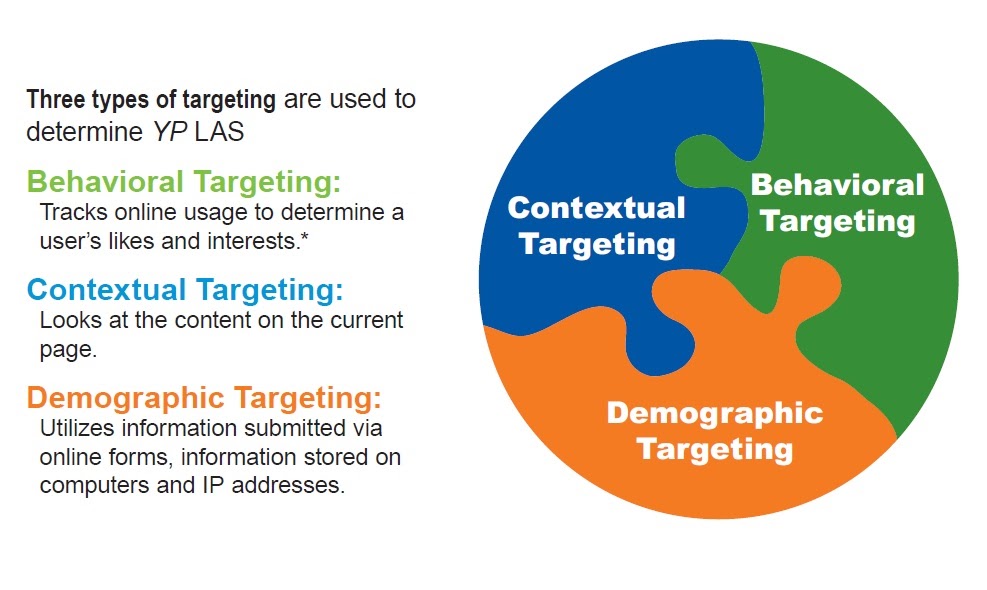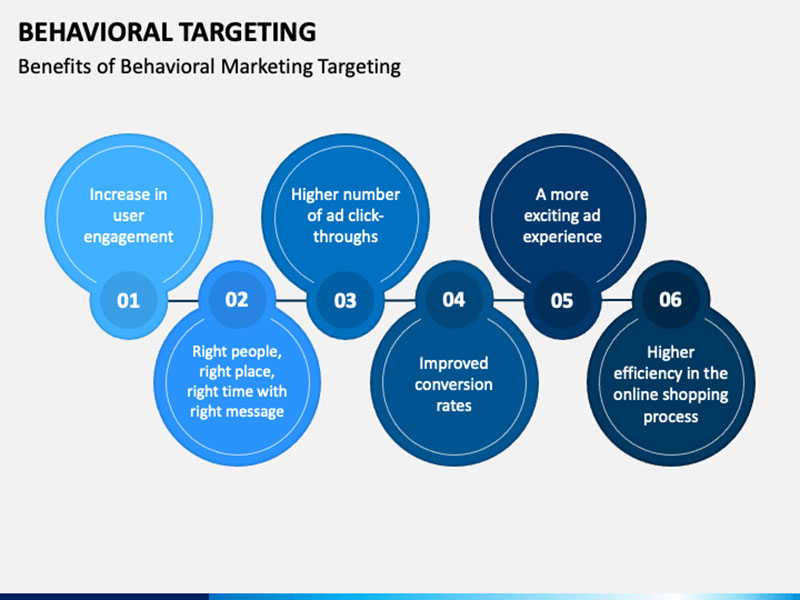
Image from Insta Page
Marketers are constantly seeking innovative strategies to reach and engage their target customers, and one strategy that has gained significant traction in recent years is behavioral targeting.
Behavioral targeting is a marketing strategy that relies on collecting and analyzing user data to understand how individuals interact with digital platforms and then tailoring marketing efforts based on those observed behaviors.
By leveraging consumer behavior data, behavioral targeting allows you to create personalized and highly targeted marketing campaigns that resonate with your audience.
This article will explore how behavioral targeting can transform your marketing strategy.
- Basics of Behavioral Targeting
- Advantages of Behavioral Targeting
- Types of Behavioral Segmentation
- Implementing Behavioral Targeting in Your Strategy
- Challenges and Ethical Considerations
- The Future of Marketing Lies in Behavioral Targeting
- FAQ Section
- 1. How does behavioral targeting differ from traditional marketing strategies?
- 2. What types of data are used in behavioral targeting?
- 3. How can behavioral targeting enhance the user experience?
- 4. What benefits can businesses expect from implementing behavioral targeting?
- 5. Is behavioral targeting suitable for all industries?
Basics of Behavioral Targeting
Behavioral targeting is a marketing technique that goes beyond traditional demographic targeting.
Instead of relying solely on demographic parameters such as age, location, or income, behavioral targeting focuses on understanding and leveraging consumer behavior.
You can create detailed user profiles based on specific behaviors and actions by analyzing behavioral data collected through various channels like web analytics tools, cookies, browsing history, and IP addresses.
Unlike demographic data, which provides limited insights into consumer needs and preferences, behavioral data offers a more comprehensive understanding of individual behaviors, interests, and pain points.
This allows marketers to deliver highly relevant and personalized content, increasing the chances of engagement, conversions, and customer satisfaction.
Advantages of Behavioral Targeting

Image from Info TMS Outsource
Behavioral targeting offers several key benefits that make it a valuable strategy for marketers:
Informed Decision-Making
By analyzing consumer behavior, you can gain valuable insights into how customers interact with your business.
This information helps you make informed decisions about product offerings, messaging, and marketing strategies.
Enhanced Credibility
Consumers value authenticity and personalized experiences. Behavioral targeting allows marketers to build credibility by delivering tailored content that addresses specific customer needs and interests.
Predictive Analysis
You can predict future purchasing patterns and preferences by studying consumer behavior patterns.
This enables them to anticipate customer needs and tailor their marketing efforts accordingly.
Deeper Customer Insights
Behavioral targeting provides marketers with a window into the customer’s mind.
Marketers can create more effective campaigns and foster stronger customer relationships by understanding how customers engage with their brand and what influences their decision-making process.
Types of Behavioral Segmentation
To effectively implement behavioral targeting, marketers employ various forms of behavioral segmentation.
These segmentation strategies categorize consumers based on specific behavioral patterns and approaches. Here are four common types of behavioral segmentation:
Purchase-Usage Behavior: This segmentation analyzes consumer behavior during the initial buying stage. It provides insights into factors influencing purchasing decisions, such as product research, price comparison, and hurdles faced by customers.
Occasion-Timing-Based Behavior: This segmentation categorizes consumers based on their behavior during specific occasions or timing. For example, promotions offered during holidays or daily routines can target specific customer segments.
Segmentation Based on Benefits Sought: This approach segments customers based on the specific benefits they seek from a product or service. By understanding the value customers derive from a product, marketers can tailor their marketing efforts to highlight relevant features and benefits.
Customer Loyalty-Based Segmentation: This segmentation leverages customer loyalty and engagement to create targeted marketing campaigns. You can refine their strategies and improve brand loyalty by focusing on loyal customers and understanding their behavior patterns.
Implementing Behavioral Targeting in Your Strategy
Implementing behavioral targeting in your marketing strategy can significantly enhance your campaigns by delivering personalized experiences to your audience. Here’s a step-by-step guide on how to effectively integrate behavioral targeting into your strategy:
Understand Your Audience
Firstly, define your target audience by identifying the characteristics of your ideal customer.
Segment your audience based on demographics, location, and preferences.
Conduct audience research to gather insights on customer behavior by analyzing data from your website, social media, and other touchpoints.
Set Clear Objectives
Establish specific, measurable, and achievable objectives and align goals with your overall marketing strategy.
Determine metrics to measure the success of your behavioral targeting efforts. Examples include conversion rates, click-through rates, and customer retention.
Leverage Data Analytics
You can use analytics tools to monitor user behavior on your website. You can track actions such as page views, clicks, and time spent on the site.
You can combine behavioral data with existing customer data for a comprehensive view. Integrate Customer Relationship Management (CRM) Systems to provide valuable insights into customer interactions.
Create Personalized Content
Create content that adapts to user behavior by personalizing messaging based on previous interactions.
You can implement algorithms that suggest products based on user preferences to increase cross-selling and upselling opportunities.
Implement Behavioral Triggers
Identify specific actions or behaviors that trigger personalized responses. Examples include abandoned carts, time spent on a particular page, or clicks on specific products.
You can also set up automated responses to trigger points. Deliver targeted emails, notifications, or special offers based on user behavior.
Ensure Privacy and Compliance
Stay compliant with privacy laws such as the General Data Protection Regulation (GDPR) and the California Consumer Privacy Act (CCPA). Communicate data usage and obtain user consent. You should also prioritize user privacy by anonymizing and aggregating data when possible. Ensure you use secure channels for data transmission.
Test and Optimize
Test different behavioral targeting strategies to identify what works best. You can experiment with variations in messaging, timing, and content.
Monitor the performance of your behavioral targeting campaigns. Use insights to refine and optimize your strategy over time.
Measure Success
Regularly assess key performance indicators to measure the success of your behavioral targeting efforts and identify areas for improvement.
Based on data and feedback, you can refine your targeting strategy and implement changes to enhance effectiveness.
Challenges and Ethical Considerations
While behavioral targeting offers many benefits, it comes with challenges and ethical considerations.
Running behavioral targeting campaigns can be costly, mainly when using pay-per-click ads.
Additionally, behavioral targeting may not yield positive results without profoundly understanding your audience and their preferences.
It’s crucial to prioritize data privacy and security and that marketers adhere to relevant data protection regulations.
The Future of Marketing Lies in Behavioral Targeting
In an era of banner blindness and increasing ad avoidance, behavioral targeting has emerged as a powerful tool for marketers.
You can create highly personalized and targeted campaigns that capture attention, drive engagement, and boost revenue by leveraging behavioral data.
Understanding and responding to consumer behavior is vital to staying relevant and competitive in today’s fast-paced digital landscape.
As technology advances, behavioral targeting will become more integral to successful marketing strategies.
Embrace behavioral targeting to transform your marketing approach and help you achieve remarkable success in reaching and engaging your customers.
FAQ Section
1. How does behavioral targeting differ from traditional marketing strategies?
Traditional marketing often relies on demographic data, while behavioral targeting focuses on observed user behaviors. Behavioral targeting tailors marketing efforts to specific actions, providing a more personalized and relevant experience for users.
2. What types of data are used in behavioral targeting?
Behavioral targeting uses various data, including online activities such as clicks and searches, purchase history, and social media interactions to create user profiles. By gathering this information, marketers can gain insight into user behavior and preferences, which allows them to create ads or promotions that are more likely to resonate with their audience. The effective use of this data increases the chances that they will convert into customers.
3. How can behavioral targeting enhance the user experience?
Behavioral targeting ensures that users receive content and ads that are tailored to their interests and behaviors, enhancing the overall user experience. Users are more likely to engage with content that is relevant to their preferences, leading to increased satisfaction.
4. What benefits can businesses expect from implementing behavioral targeting?
Businesses can expect improved conversion rates, increased user engagement, and a more efficient use of marketing resources. With highly targeted campaigns, businesses can achieve a better return on investment (ROI) and maximize the impact of their marketing efforts.
5. Is behavioral targeting suitable for all industries?
While it can be effective in some industries, it may not be suitable for all. The effectiveness of behavioral targeting depends on various factors, such as the nature of the product or service, the target audience, and the marketing goals. Businesses in e-commerce, online services, and content-driven sectors often succeed significantly. However, adapting strategies to suit the nature of each industry is crucial for optimal results.






0 Comments